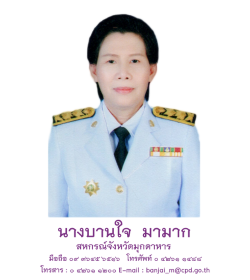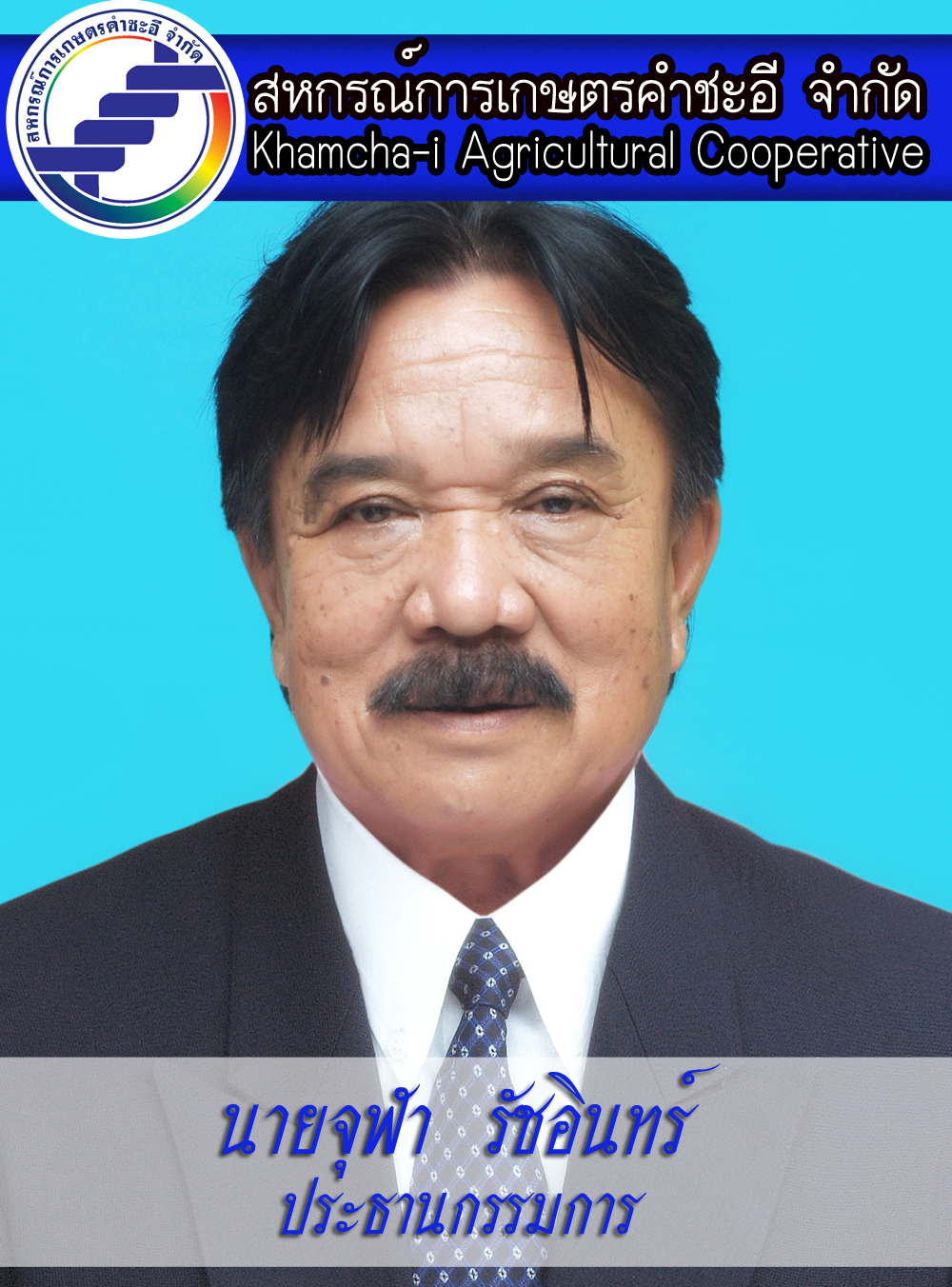×
ยินดีต้อนรับสู่ ฟอรัม Kunena!
อยากรู้จังเลยว่าคุณชอบอะไร รู้จักกับที่นี่ได้อย่างไร และสาเหตุจูงใจอะไรจึงลงทะเบียนเป็นสมาชิกกับทางเรา ช่วยแจ้งให้เราได้ทราบหน่อยได้ไหม
ยินดีต้อนรับสมาชิกใหม่ทุกท่าน และหวังว่าทางเราจะได้รับใช้คุณเยี่ยงนี้ตลอดไป
อยากรู้จังเลยว่าคุณชอบอะไร รู้จักกับที่นี่ได้อย่างไร และสาเหตุจูงใจอะไรจึงลงทะเบียนเป็นสมาชิกกับทางเรา ช่วยแจ้งให้เราได้ทราบหน่อยได้ไหม
ยินดีต้อนรับสมาชิกใหม่ทุกท่าน และหวังว่าทางเราจะได้รับใช้คุณเยี่ยงนี้ตลอดไป
Бест Вей
- PerryCex
- Topic Author
- Visitor
-

1 week 6 days ago #2660744
by PerryCex
Replied by PerryCex on topic omg сайт
How a drab Soviet metropolis became Central Asia’s capital of cool
<a href=https://omgto3.com>omg
Several cities around the globe have reinvented themselves in recent years, but none more successfully than Almaty.
Since the collapse of the USSR, Kazakhstan’s largest city (population 2.2 million and growing) has evolved from a drab, run-of-the-mill Soviet metropolis into the urban star of Central Asia.
omgto3.com
площадка оmg darkmarket
Along the way, the city has developed one of the world’s most beautiful metro systems, grown into a thriving banking and finance center, complemented its vintage bazaars with luxury boutiques and modern shopping malls and reshaped its traditional gastronomy into a nouvelle cuisine that’s drawing raves from foodies around the world.
Almaty is also evolving into the cultural and artistic hub of Central Asia. It’s already got several world-class museums (including a “secret” underground collection that doesn’t even have a name) and a dazzling new cultural center slated to open early next year.
“It’s an incredibly livable city,” says long-time American resident Dennis Keen, a historic preservation advocate and founder of Walking Almaty.
“Green and clean. You don’t need a car. The public transit here is fantastic. And it’s very much the center of contemporary art and dining in Central Asia.”
Keen adds that whenever he tells someone back home that he lives in Kazakhstan, “Borat” inevitably comes up. The movie’s title character doesn’t paint a very flattering portrait of the Central Asian nation. But nowadays one is tempted to think that if Borat visited Almaty now, he would say, “Very nice!”
<a href=https://omgto3.com>omg
Several cities around the globe have reinvented themselves in recent years, but none more successfully than Almaty.
Since the collapse of the USSR, Kazakhstan’s largest city (population 2.2 million and growing) has evolved from a drab, run-of-the-mill Soviet metropolis into the urban star of Central Asia.
omgto3.com
площадка оmg darkmarket
Along the way, the city has developed one of the world’s most beautiful metro systems, grown into a thriving banking and finance center, complemented its vintage bazaars with luxury boutiques and modern shopping malls and reshaped its traditional gastronomy into a nouvelle cuisine that’s drawing raves from foodies around the world.
Almaty is also evolving into the cultural and artistic hub of Central Asia. It’s already got several world-class museums (including a “secret” underground collection that doesn’t even have a name) and a dazzling new cultural center slated to open early next year.
“It’s an incredibly livable city,” says long-time American resident Dennis Keen, a historic preservation advocate and founder of Walking Almaty.
“Green and clean. You don’t need a car. The public transit here is fantastic. And it’s very much the center of contemporary art and dining in Central Asia.”
Keen adds that whenever he tells someone back home that he lives in Kazakhstan, “Borat” inevitably comes up. The movie’s title character doesn’t paint a very flattering portrait of the Central Asian nation. But nowadays one is tempted to think that if Borat visited Almaty now, he would say, “Very nice!”
Reply to PerryCex
- WilliamIncen
- Topic Author
- Visitor
-

1 week 6 days ago #2660750
by WilliamIncen
Replied by WilliamIncen on topic kra12.cc
Director Jon M. Chu missed ‘Wicked’ premiere to welcome fifth child
kra8.cc
“Wicked” director Jon M. Chu couldn’t attend the film’s premiere in Los Angeles, and the reason is quite “wonderful.”
Chu shared on his Instagram Stories that he and his wife Kristin Hodge welcomed their fifth child on Saturday, writing that he “can’t believe this happened while the movie is premiering.”
“Magic is in the air,” he wrote, sharing a photo of Hodge holding their newborn daughter.
krak10.com
kra13.gl
He added a note to his new addition: “Welcome to our world, you’re gonna do great. You have a lot of witches on your side.”
“Wicked” stars singer Ariana Grande and Oscar-nominated actress Cynthia Erivo star as witches Glinda and Elphaba, respectively. The two-part movie is a cinematic adaptation of the famed Broadway musical, which is a prequel to “The Wizard of Oz” and tells an alternate version of events in Oz before Dorothy’s arrival.
Chu may not have been able to physically attend the premiere but his presence was felt.
According to footage from inside the theater posted online, a video of Chu speaking from the hospital was played before the movie began.
“I’ve waited for three years to have this moment to share a movie with you but I’ve waited my whole life to have this moment, to have a fifth child right now,” he said in the video, as the audience was heard collectively “aww-ing” at the sentiment.
With a laugh, Chu added that “of course, this little girl knows when to show up.”
Jonathan Bailey, Bowen Yang, Ethan Slater, Michelle Yeoh and Jeff Goldblum round out the ensemble cast.
Part one of “Wicked” will soar in theaters on November 22. The second film is expected in November 2025.
kra8.cc
“Wicked” director Jon M. Chu couldn’t attend the film’s premiere in Los Angeles, and the reason is quite “wonderful.”
Chu shared on his Instagram Stories that he and his wife Kristin Hodge welcomed their fifth child on Saturday, writing that he “can’t believe this happened while the movie is premiering.”
“Magic is in the air,” he wrote, sharing a photo of Hodge holding their newborn daughter.
krak10.com
kra13.gl
He added a note to his new addition: “Welcome to our world, you’re gonna do great. You have a lot of witches on your side.”
“Wicked” stars singer Ariana Grande and Oscar-nominated actress Cynthia Erivo star as witches Glinda and Elphaba, respectively. The two-part movie is a cinematic adaptation of the famed Broadway musical, which is a prequel to “The Wizard of Oz” and tells an alternate version of events in Oz before Dorothy’s arrival.
Chu may not have been able to physically attend the premiere but his presence was felt.
According to footage from inside the theater posted online, a video of Chu speaking from the hospital was played before the movie began.
“I’ve waited for three years to have this moment to share a movie with you but I’ve waited my whole life to have this moment, to have a fifth child right now,” he said in the video, as the audience was heard collectively “aww-ing” at the sentiment.
With a laugh, Chu added that “of course, this little girl knows when to show up.”
Jonathan Bailey, Bowen Yang, Ethan Slater, Michelle Yeoh and Jeff Goldblum round out the ensemble cast.
Part one of “Wicked” will soar in theaters on November 22. The second film is expected in November 2025.
Reply to WilliamIncen
- PeterIonix
- Topic Author
- Visitor
-

1 week 6 days ago #2660900
by PeterIonix
Replied by PeterIonix on topic омг
Why this small city is the ‘eyeglasses capital’ of Japan
<a href=https://omgto3.com>зайти на омг
Japan is famed for its skilled artisans, masters who maintain a commitment to tradition while modernizing production techniques in line with the development of new materials and processes.
Many places in the country have grown famous by focusing on specific crafts, from exquisite kimonos to perfectly designed knives. Among them is the small city of Sabae, in Fukui prefecture, about a 3.5-hour train ride from Tokyo.
omgto3.com
площадка оmg darkmarket
It’s widely known as Japan’s eyeglasses capital – and for good reason. Sabae produces over 90% of the frames manufactured in the country, according to the local government. Signs and objects shaped like eyeglasses can be found on city streets, and there’s even a museum and festival devoted to spectacles.
The art of making spectacles
Sabae, located on Japan’s main Honshu island near the city of Fukui, has been producing quality eyewear for more than a century.
It all started in 1905, when a local government official invited skilled eyeglasses artisans to come to the city to teach their craft, an attempt to create new opportunities for local farmers.
The move paid off. Today, Sabae has over 100 companies that collaborate to make pairs of glasses.
Though these studios use cutting-edge machinery to produce new frames made of metal and acetate, most stages still require the skilled hands and trained eyes of Sabae’s master artisans.
That includes Takeshi Yamae, a frame designer with Japanese brand Boston Club who has lived in the city for 17 years. He tells CNN one pair of glasses can involve more than 200 steps.
“I first design it, sketch it, then put it into my computer,” he says. “From the time I start designing, to the time I have the perfect product, it takes more than a year.”
<a href=https://omgto3.com>зайти на омг
Japan is famed for its skilled artisans, masters who maintain a commitment to tradition while modernizing production techniques in line with the development of new materials and processes.
Many places in the country have grown famous by focusing on specific crafts, from exquisite kimonos to perfectly designed knives. Among them is the small city of Sabae, in Fukui prefecture, about a 3.5-hour train ride from Tokyo.
omgto3.com
площадка оmg darkmarket
It’s widely known as Japan’s eyeglasses capital – and for good reason. Sabae produces over 90% of the frames manufactured in the country, according to the local government. Signs and objects shaped like eyeglasses can be found on city streets, and there’s even a museum and festival devoted to spectacles.
The art of making spectacles
Sabae, located on Japan’s main Honshu island near the city of Fukui, has been producing quality eyewear for more than a century.
It all started in 1905, when a local government official invited skilled eyeglasses artisans to come to the city to teach their craft, an attempt to create new opportunities for local farmers.
The move paid off. Today, Sabae has over 100 companies that collaborate to make pairs of glasses.
Though these studios use cutting-edge machinery to produce new frames made of metal and acetate, most stages still require the skilled hands and trained eyes of Sabae’s master artisans.
That includes Takeshi Yamae, a frame designer with Japanese brand Boston Club who has lived in the city for 17 years. He tells CNN one pair of glasses can involve more than 200 steps.
“I first design it, sketch it, then put it into my computer,” he says. “From the time I start designing, to the time I have the perfect product, it takes more than a year.”
Reply to PeterIonix
- RonaldPramp
- Topic Author
- Visitor
-

1 week 6 days ago #2660902
by RonaldPramp
Replied by RonaldPramp on topic омг ссылка
How a drab Soviet metropolis became Central Asia’s capital of cool
<a href=https://omgto3.com>омг ссылка
Several cities around the globe have reinvented themselves in recent years, but none more successfully than Almaty.
Since the collapse of the USSR, Kazakhstan’s largest city (population 2.2 million and growing) has evolved from a drab, run-of-the-mill Soviet metropolis into the urban star of Central Asia.
omgto3.com
омг омг
Along the way, the city has developed one of the world’s most beautiful metro systems, grown into a thriving banking and finance center, complemented its vintage bazaars with luxury boutiques and modern shopping malls and reshaped its traditional gastronomy into a nouvelle cuisine that’s drawing raves from foodies around the world.
Almaty is also evolving into the cultural and artistic hub of Central Asia. It’s already got several world-class museums (including a “secret” underground collection that doesn’t even have a name) and a dazzling new cultural center slated to open early next year.
“It’s an incredibly livable city,” says long-time American resident Dennis Keen, a historic preservation advocate and founder of Walking Almaty.
“Green and clean. You don’t need a car. The public transit here is fantastic. And it’s very much the center of contemporary art and dining in Central Asia.”
Keen adds that whenever he tells someone back home that he lives in Kazakhstan, “Borat” inevitably comes up. The movie’s title character doesn’t paint a very flattering portrait of the Central Asian nation. But nowadays one is tempted to think that if Borat visited Almaty now, he would say, “Very nice!”
<a href=https://omgto3.com>омг ссылка
Several cities around the globe have reinvented themselves in recent years, but none more successfully than Almaty.
Since the collapse of the USSR, Kazakhstan’s largest city (population 2.2 million and growing) has evolved from a drab, run-of-the-mill Soviet metropolis into the urban star of Central Asia.
omgto3.com
омг омг
Along the way, the city has developed one of the world’s most beautiful metro systems, grown into a thriving banking and finance center, complemented its vintage bazaars with luxury boutiques and modern shopping malls and reshaped its traditional gastronomy into a nouvelle cuisine that’s drawing raves from foodies around the world.
Almaty is also evolving into the cultural and artistic hub of Central Asia. It’s already got several world-class museums (including a “secret” underground collection that doesn’t even have a name) and a dazzling new cultural center slated to open early next year.
“It’s an incredibly livable city,” says long-time American resident Dennis Keen, a historic preservation advocate and founder of Walking Almaty.
“Green and clean. You don’t need a car. The public transit here is fantastic. And it’s very much the center of contemporary art and dining in Central Asia.”
Keen adds that whenever he tells someone back home that he lives in Kazakhstan, “Borat” inevitably comes up. The movie’s title character doesn’t paint a very flattering portrait of the Central Asian nation. But nowadays one is tempted to think that if Borat visited Almaty now, he would say, “Very nice!”
Reply to RonaldPramp
- RonaldPramp
- Topic Author
- Visitor
-

1 week 6 days ago #2660924
by RonaldPramp
Replied by RonaldPramp on topic omg зайти
How a drab Soviet metropolis became Central Asia’s capital of cool
<a href=https://omgto3.com>omg зеркало
Several cities around the globe have reinvented themselves in recent years, but none more successfully than Almaty.
Since the collapse of the USSR, Kazakhstan’s largest city (population 2.2 million and growing) has evolved from a drab, run-of-the-mill Soviet metropolis into the urban star of Central Asia.
omgto3.com
omg зеркало
Along the way, the city has developed one of the world’s most beautiful metro systems, grown into a thriving banking and finance center, complemented its vintage bazaars with luxury boutiques and modern shopping malls and reshaped its traditional gastronomy into a nouvelle cuisine that’s drawing raves from foodies around the world.
Almaty is also evolving into the cultural and artistic hub of Central Asia. It’s already got several world-class museums (including a “secret” underground collection that doesn’t even have a name) and a dazzling new cultural center slated to open early next year.
“It’s an incredibly livable city,” says long-time American resident Dennis Keen, a historic preservation advocate and founder of Walking Almaty.
“Green and clean. You don’t need a car. The public transit here is fantastic. And it’s very much the center of contemporary art and dining in Central Asia.”
Keen adds that whenever he tells someone back home that he lives in Kazakhstan, “Borat” inevitably comes up. The movie’s title character doesn’t paint a very flattering portrait of the Central Asian nation. But nowadays one is tempted to think that if Borat visited Almaty now, he would say, “Very nice!”
<a href=https://omgto3.com>omg зеркало
Several cities around the globe have reinvented themselves in recent years, but none more successfully than Almaty.
Since the collapse of the USSR, Kazakhstan’s largest city (population 2.2 million and growing) has evolved from a drab, run-of-the-mill Soviet metropolis into the urban star of Central Asia.
omgto3.com
omg зеркало
Along the way, the city has developed one of the world’s most beautiful metro systems, grown into a thriving banking and finance center, complemented its vintage bazaars with luxury boutiques and modern shopping malls and reshaped its traditional gastronomy into a nouvelle cuisine that’s drawing raves from foodies around the world.
Almaty is also evolving into the cultural and artistic hub of Central Asia. It’s already got several world-class museums (including a “secret” underground collection that doesn’t even have a name) and a dazzling new cultural center slated to open early next year.
“It’s an incredibly livable city,” says long-time American resident Dennis Keen, a historic preservation advocate and founder of Walking Almaty.
“Green and clean. You don’t need a car. The public transit here is fantastic. And it’s very much the center of contemporary art and dining in Central Asia.”
Keen adds that whenever he tells someone back home that he lives in Kazakhstan, “Borat” inevitably comes up. The movie’s title character doesn’t paint a very flattering portrait of the Central Asian nation. But nowadays one is tempted to think that if Borat visited Almaty now, he would say, “Very nice!”
Reply to RonaldPramp
- PeterIonix
- Topic Author
- Visitor
-

1 week 6 days ago #2660925
by PeterIonix
Replied by PeterIonix on topic омг вход
Why this small city is the ‘eyeglasses capital’ of Japan
<a href=https://omgto3.com>omg зеркало
Japan is famed for its skilled artisans, masters who maintain a commitment to tradition while modernizing production techniques in line with the development of new materials and processes.
Many places in the country have grown famous by focusing on specific crafts, from exquisite kimonos to perfectly designed knives. Among them is the small city of Sabae, in Fukui prefecture, about a 3.5-hour train ride from Tokyo.
omgto3.com
омг ссылка
It’s widely known as Japan’s eyeglasses capital – and for good reason. Sabae produces over 90% of the frames manufactured in the country, according to the local government. Signs and objects shaped like eyeglasses can be found on city streets, and there’s even a museum and festival devoted to spectacles.
The art of making spectacles
Sabae, located on Japan’s main Honshu island near the city of Fukui, has been producing quality eyewear for more than a century.
It all started in 1905, when a local government official invited skilled eyeglasses artisans to come to the city to teach their craft, an attempt to create new opportunities for local farmers.
The move paid off. Today, Sabae has over 100 companies that collaborate to make pairs of glasses.
Though these studios use cutting-edge machinery to produce new frames made of metal and acetate, most stages still require the skilled hands and trained eyes of Sabae’s master artisans.
That includes Takeshi Yamae, a frame designer with Japanese brand Boston Club who has lived in the city for 17 years. He tells CNN one pair of glasses can involve more than 200 steps.
“I first design it, sketch it, then put it into my computer,” he says. “From the time I start designing, to the time I have the perfect product, it takes more than a year.”
<a href=https://omgto3.com>omg зеркало
Japan is famed for its skilled artisans, masters who maintain a commitment to tradition while modernizing production techniques in line with the development of new materials and processes.
Many places in the country have grown famous by focusing on specific crafts, from exquisite kimonos to perfectly designed knives. Among them is the small city of Sabae, in Fukui prefecture, about a 3.5-hour train ride from Tokyo.
omgto3.com
омг ссылка
It’s widely known as Japan’s eyeglasses capital – and for good reason. Sabae produces over 90% of the frames manufactured in the country, according to the local government. Signs and objects shaped like eyeglasses can be found on city streets, and there’s even a museum and festival devoted to spectacles.
The art of making spectacles
Sabae, located on Japan’s main Honshu island near the city of Fukui, has been producing quality eyewear for more than a century.
It all started in 1905, when a local government official invited skilled eyeglasses artisans to come to the city to teach their craft, an attempt to create new opportunities for local farmers.
The move paid off. Today, Sabae has over 100 companies that collaborate to make pairs of glasses.
Though these studios use cutting-edge machinery to produce new frames made of metal and acetate, most stages still require the skilled hands and trained eyes of Sabae’s master artisans.
That includes Takeshi Yamae, a frame designer with Japanese brand Boston Club who has lived in the city for 17 years. He tells CNN one pair of glasses can involve more than 200 steps.
“I first design it, sketch it, then put it into my computer,” he says. “From the time I start designing, to the time I have the perfect product, it takes more than a year.”
Reply to PeterIonix
Time to create page: 2.215 seconds












